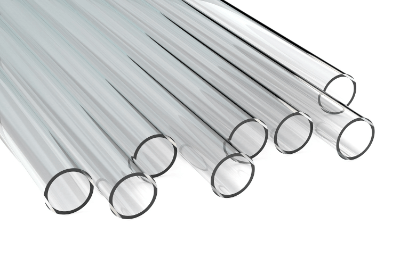What Is a Heat Resistant Glass Tube?

A heat resistant glass tube is a tubular vessel made of special glass that can withstand high temperatures.
Compared to ordinary glass tubing, heat-resistant glass tubing is characterized by its resistance to thermal expansion. Since thermal expansion can cause glass to break, heat resistant glass tubes are made of heat resistant glass with a low thermal expansion coefficient.
There are several types of heat-resistant glass with different compositions and manufacturing methods, each of which has a different heat resistance temperature. Typical materials include borosilicate glass and quartz glass.
Heat resistant glass tubes have the ability to withstand high temperatures, but there are still limits.
Exposure to excessive temperatures or sudden temperature changes can cause breakage or cracking. When using them, the maximum temperature and temperature change limits recommended by the manufacturer must be observed.
Uses of Heat Resistant Glass Tubes
Heat resistant glass tubes have a variety of uses due to their characteristics.
1. Scientific Experiments
One of the main uses is in glassware for scientific experiments. Among heat-resistant glass types, quartz glass has particularly high heat resistance, with a maximum working temperature of 1,000℃. Quartz glassware is also highly resistant to chemicals, making quartz glassware useful in scientific experiments.
2. Heat-Retaining Containers
Quartz glass is also used as heat-retaining containers to keep hot drinks and liquids warm. Heat resistant glass tubes are often incorporated inside thermal water bottles and thermal pots.
3. Manufacturing
In manufacturing, they are also important in the chemical and pharmaceutical industries. Due to their heat resistance and chemical stability, they are used in a variety of chemical processes and pharmaceutical syntheses.
Principle of Heat Resistant Glass Tubes
When glass is cooled, tension is generated on the glass surface. Conversely, when it is heated, compressive force is generated, causing it to expand and contract. If this tension or compressive force is greater than the strength of the glass itself, the glass will break.
While glass is resistant to compressive forces, it is weak against tension, so tension is the most common cause of glass breakage. It is known that the tension generated inside glass increases as the coefficient of thermal expansion increases, and heat-resistant glass has a low coefficient of thermal expansion.
Heat-resistant glass has a low coefficient of thermal expansion, which means that the tension generated in the glass is small and the glass is not easily broken even if it is cooled rapidly. Heat resistant glass tubes made of heat resistant glass can withstand rapid changes in temperature.
The composition of glass greatly affects the thermal expansion coefficient. The higher the content of alkali components, such as sodium and potassium will create a higher coefficient of thermal expansion. Heat resistant glass tubes are manufactured with a high content of silicon and boron, the main components of glass, and a low alkali content.
Types of Heat Resistant Glass Tubes
There are several types of heat resistant glass tubes, depending on the material and other factors.
The following are typical types of heat resistant glass tubes:
1. Quartz Glass Tubing
Quartz glass is a special type of glass with high heat resistance and chemical stability. It can withstand very high temperatures, with a heat resistance temperature of about 1,000°C.
Due to its high heat resistance and chemical stability, it is used as a container for chemical reactions and high-temperature processes. It is also used for optical equipment and UV irradiation equipment due to its high UV transmittance.
2. Borosilicate Glass Tubing
This special glass has high heat resistance and impact resistance. It is mainly used for observation windows of furnaces and kilns, glass for furnace doors, and glass doors of fireplaces, which require heat resistance.
Borosilicate glass is resistant to thermal expansion under high temperatures and is relatively resistant to sudden temperature changes. It also has impact resistance and is resistant to breakage.
3. Neoceram Glass Tubing
This special glass has excellent heat resistance and transparency. It is a heat-resistant glass with a maximum operating temperature of about 700°C. Its greatest feature is its high transparency. It is mainly used in situations where observation and measurement are required in high-temperature environments.
Neoceram glass has properties to withstand high temperatures and is also chemically resistant. Its high optical transparency makes it ideal for experiments and process observation at high temperatures. Due to its high transparency, it is often used for glass surfaces in oven ovens and cooking dishes.